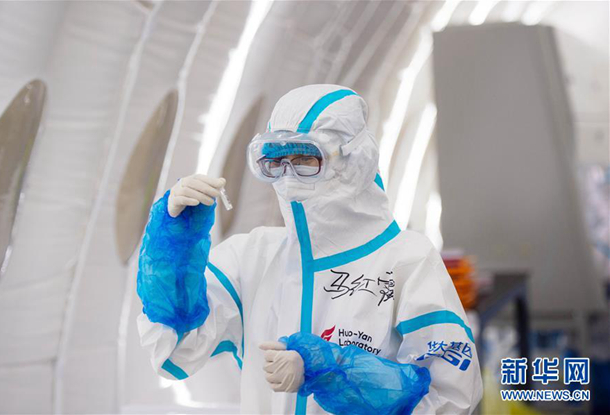
Chinese Researchers Publish Early Findings About Novel Coronavirus
 |
| [Tuchong] |
BEIJING, Jan. 26 (Xinhua) — Chinese researchers have published a series of academic papers on their early findings of the novel coronavirus that has claimed over 50 lives and infected nearly 2,000 people nationwide in China.
A paper published recently in the New England Journal of Medicine showed the electron micrographs of the novel coronavirus (2019-nCoV).
The virus particles were generally spherical, with some pleomorphism. Their diameters varied from about 60 to 140 nanometers. They had quite distinctive spikes, about 9 to 12 nanometers, which gave them the appearance of a solar corona, according to the paper.
The genome sequencing showed that the 2019-nCoV was more than 85 percent identical with a SARS-like CoV derived from bats, said the paper, with Gao Fu, head of the Chinese Center for Disease Control and Prevention, as one of its authors.
An earlier paper published online by SCIENCE CHINA Life Sciences said the 2019-nCoV was about 70 percent similar to the SARS-CoV.
However, both studies confirmed that the 2019-nCoV was distinct from the SARS-CoV. They belonged to different branches in lineage B of the sarbecovirus subgenus of the Coronaviridae family.
The paper also introduced how the research detected and isolated the virus as well as the method they employed in sequencing the genome of the virus.
Novel coronaviruses are likely to emerge periodically in humans, due to the high prevalence and wide distribution of coronaviruses, the large genetic diversity and frequent recombination of their genomes, as well as increasing human-animal interface activities, said the paper.
The Lancet, the world's leading independent general medical journal, also published recently two studies based on clinical data from initial cases of the 2019 novel coronavirus.
One of the papers studied the first 41 novel coronavirus cases with data from Wuhan, the center of the epidemic in central China's Hubei Province.
More than 70 percent of the 41 infected patients admitted in hospitals by Jan. 2 were men, and about one-third of them had underlying diseases, including diabetes, hypertension and cardiovascular disease. Their median age was 49 years.
Over 60 percent of these patients had been exposed to the Huanan seafood market, which is considered the source of the coronavirus outbreak.
The paper indicated some similar symptoms between the novel coronavirus cases and SARS. The common symptoms at onset of illness included fever, cough and fatigue. About 55 percent of the patients developed dyspnoea. Less common symptoms were sputum production, headache, hemoptysis and diarrhea.
"Although some symptoms are similar to those of SARS, such as fever, dry cough and dyspnea, there are still important differences. Novel coronavirus patients have no upper respiratory tract symptoms, such a runny nose, sneezing and sore throat," said Professor Cao Bin, correspondence author of the paper from the China-Japan Friendship Hospital and Beijing-based Capital Medical University.
"They also show little intestinal symptoms, such as diarrhea, which was seen in 20 to 25 percent of SARS patients," Cao said.
Another study reported person-to-person transmission and inter-city spread of the new coronavirus in six members of the same family.
The authors stress the need to maximize the chances of containing 2019-nCoV infection through careful surveillance, active contact tracing and vigorously searching for the animal hosts and their transmission routes to humans.
(Source: Xinhua)
 Women Medics in NW China's Xinjiang Contribute to COVID-19 Epidemic Containment
Women Medics in NW China's Xinjiang Contribute to COVID-19 Epidemic Containment Women CPC Members on Front Line of Anti-COVID-19 Battle in Beijing
Women CPC Members on Front Line of Anti-COVID-19 Battle in Beijing Deputy Recalls Role in COVID-19 Fight
Deputy Recalls Role in COVID-19 Fight- Woman Epidemiological Researchers Race Against the Clock on Front Line
 Pic Story of Nurse Who Aided COVID-19 Fight in Wuhan
Pic Story of Nurse Who Aided COVID-19 Fight in Wuhan Volunteer Provides Milk Tea, Back up Anti-Epidemic Workers in NE China
Volunteer Provides Milk Tea, Back up Anti-Epidemic Workers in NE China

 京公网安备 11010102004314号
京公网安备 11010102004314号